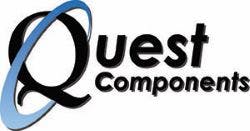Sponsored by
The global semiconductor chip shortage is big news right now, but there are also myriad other raw materials, components, and products that can be equally as difficult to source. The global pandemic took its toll on supply chains in 2020, and then continued to affect them just as many of the world’s economic engines began to roar back to life. A tight labor market, shipping container shortages, and seaport congestion were among the factors exacerbating the problem.
Whereas Institute for Supply Management’s February 2021 supply chain manager survey highlighted coronavirus impacts primarily related to Chinese supply chains and manufacturing, by March 2021 it was clear that organizations were experiencing global disruptions pertaining to supply availability, manufacturing capacity, lead times, and transport of goods. “These global disruptions were beginning to impact revenues, demand, and operations,” ISM reports.
With the first half of 2021 now firmly in the rear-view mirror, supply chain disruptions continue to linger across many B2B and B2C sectors. Chip lead times, for example, increased by seven days to 18 weeks in May 2021 (over the prior month), an indicator that chipmakers’ struggles to keep up with demand are worsening. “That gap, already the longest wait time since the firm began tracking the data in 2017,” Bloomberg reports, “is now more than four weeks longer than the previous peak in 2018.”
5 Ways to Manage During Supply Chain Constraints
With order lead times for everything from electronic components to kitchen appliances to yard fencing extended well past their norms, procurement professionals are having to get pretty creative with their sourcing. Here are five ways all buyers can better manage these disruptions and ensure good sources of supply for the remainder of 2021:
1) Plan well in advance. Some last-minute projects or materials requirements are inevitable, but buyers who plan well in advance in the current environment stand the best chance of maintaining a continuous supply of raw materials, components, parts, and other goods. By using good forecasting, demand sensing, and planning, you can embed resilience in your own company’s supply chain and support your overall procurement strategies.
2) Make your suppliers your friends. Collaboration continues to be a theme for procurement in 2021, and a “top five” priority for supply chain professionals, according to a recent APQC survey. “The crises of the last year have shown that organizations must work closely with their key suppliers to mitigate risk and quickly address unexpected situations that arise,” APQC’s Marisa Brown writes in SCMR. “Through collaboration and stronger relationships, they can identify weaknesses and create solutions that are mutually beneficial.” Encouraging collaboration within the organization can also help make the business more resilient, she adds, noting that while the constraints of the current business environment may drive cost-cutting measures, buyers shouldn’t sacrifice relationships and collaboration with key suppliers. “Strategic relationships can provide valuable support during periods of uncertainty,” Brown writes.
3) Build in smart inventory buffers. Emergency reserves tend to sit on the sidelines until a real crisis emerges, as many companies experienced in 2020 due to the pandemic. At that point, the typical inventory optimization/safety stock approaches were thrown into chaos—particularly for high-demand consumer goods. Going into 2021, the same scarcity took over the B2B sector, where electrical components, resin, plastics, and other materials became hard to find. To work through these issues, organizations are upping their contingency safety stock levels and building in smart inventory buffers. They’re also looking at longer time horizons (i.e., not just buying for the next one to two weeks), and factoring in potential shortages and product obsolescence.
4) Consider cross-referenced products that may be more readily available. If the specific brand that you normally procure isn’t available, all may not be lost. Working with your suppliers, you can consider the alternatives and explore cross-referenced products that are more readily available. Don’t limit your options. For example, there could be a Tier 2 manufacturer that has a suitable product available to ship within the next five days, versus waiting 4-6 weeks for the parts that your company usually uses. Working with a reliable distributor, you can qualify the new vendor through auditing and verify the product through extensive testing, including lifecycle and reliability. The investment in time will allow you to expand your supply options and better ride out the supply chain shortage.
5) Look beyond total lowest cost. According to ISM CEO Thomas W. Derry, the biggest supply management lesson from the pandemic was the peril of overemphasizing total lowest cost. “In a supply disruption, the business is worried about lost revenue and forgone sales,” Derry says in the ISM report. “In other words, supply management needs to redefine itself as the critical enabler of the corporate top line, not merely a contributor to the corporate bottom line.”
Adapting to the “Next Normal”
Like many other business areas, procurement has had to adapt quickly to the changing supply chain environment. Using the recommendations outlined in this article, buyers can more proactively manage the current disruption and help their organizations enter the “next normal” stronger and more resilient than ever.
Quest Components is a distributor of electronic components and a ISO 9001:2015 Certified Company located in City of Industry, CA – providing a broad range of services to OEMs and CEMs worldwide. For more information, contact https://www.questcomp.com/









